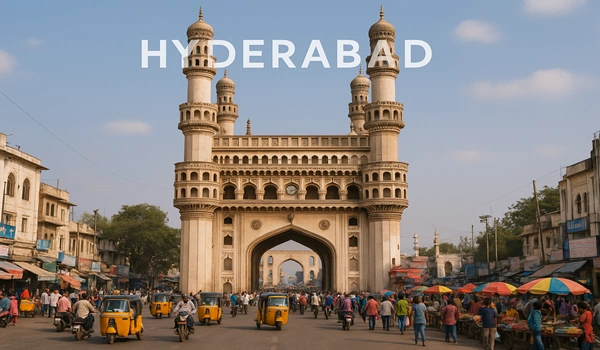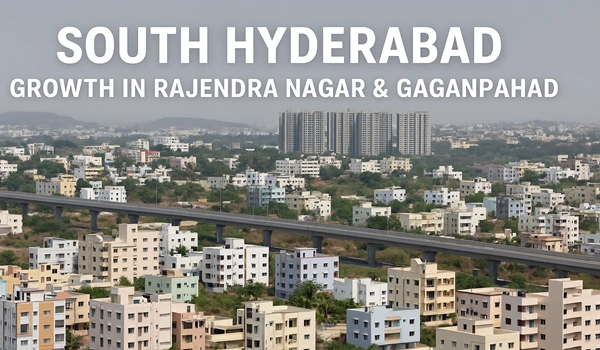Hyderabad, the capital of Telangana and the joint de jure capital of Andhra Pradesh, spans approximately 650 km² on the Deccan Plateau, centered along the Musi River. As the fourth-largest city in India by population, with around 6.9 million residents and nearly 10 million in the greater metropolitan area, Hyderabad combines rich history with rapid contemporary development.
Founded by Muhammad Quli Qutb Shah in 1591, Hyderabad became famous for its architectural marvels such as Golconda Fort and Charminar. It served as the capital of the Asaf Jahi (Nizam) dynasty from the late 17th century until mid-20th century, giving it a unique cultural identity. Today, the city's skyline still features Indo-Islamic and Asaf Jahi-era monuments, including Mecca Masjid, Chowmahalla Palace, and Falaknuma Palace.
Hyderabad is a key hub for IT and pharmaceuticals:
As the largest economic contributor in Telangana, Hyderabad had a PPP GDP of around $95 billion (2021), and is among India’s top cities for doing business.
Modern Hyderabad spans 650 km² across the Greater Hyderabad Municipal Corporation (GHMC), serving nearly 10 million residents. The city offers a tropical monsoon climate with hot summers, light winters, and an annual rainfall of about 89 cm.
Key infrastructure highlights include:
The city’s culture is an eclectic blend of Telugu and Urdu influences, known for its unique Ganga-Jamuni tehzeeb. Recognized as a UNESCO “Creative City for Gastronomy,” Hyderabad hosts cultural festivals like Bonalu, Bathukamma, and Milad un-Nabi. The cuisine, especially Hyderabadi biryani, attracts food lovers worldwide.
Hyderabad also educates thousands in traditional and modern fields, with universities like Osmania, and medical and engineering institutes.
South Hyderabad, including Rajendra Nagar and Gaganpahad, is experiencing accelerated growth. With enhancements like metro expansion, infrastructural upgrades, and inbound residential projects, it is becoming a preferred residential corridor.
These neighbourhoods offer quick access to the tech hubs, the airport, and central Hyderabad via ORR and expressways. Gaganpahad and Rajendra Nagar are emerging as well-planned suburbs, ideal for township initiatives like Godrej Regal Pavilion.
Modern Hyderabad is a fusion of historic elegance and contemporary progress. Its strong cultural identity, expanding infrastructure, booming economy, and inclusive urban planning make it a standout metropolitan choice. With emerging suburbs like Rajendra Nagar and Gaganpahad offering upscale living in South Hyderabad, the city continues as a compelling destination for residential projects like Godrej Regal Pavilion.




